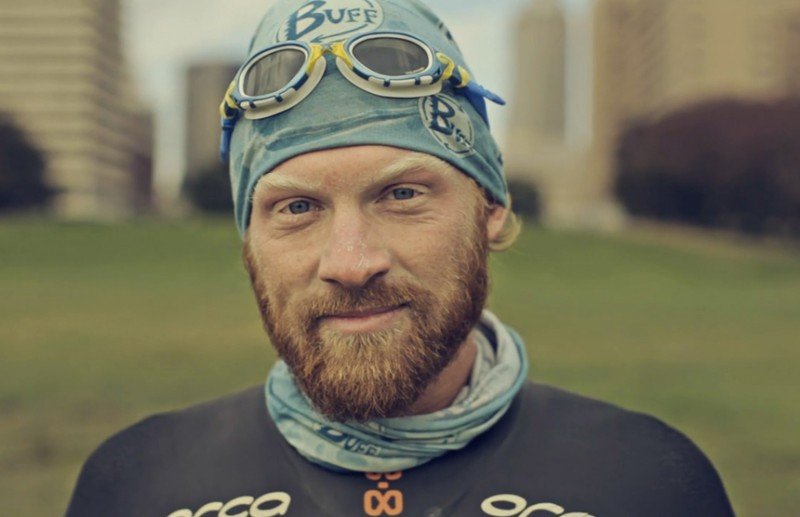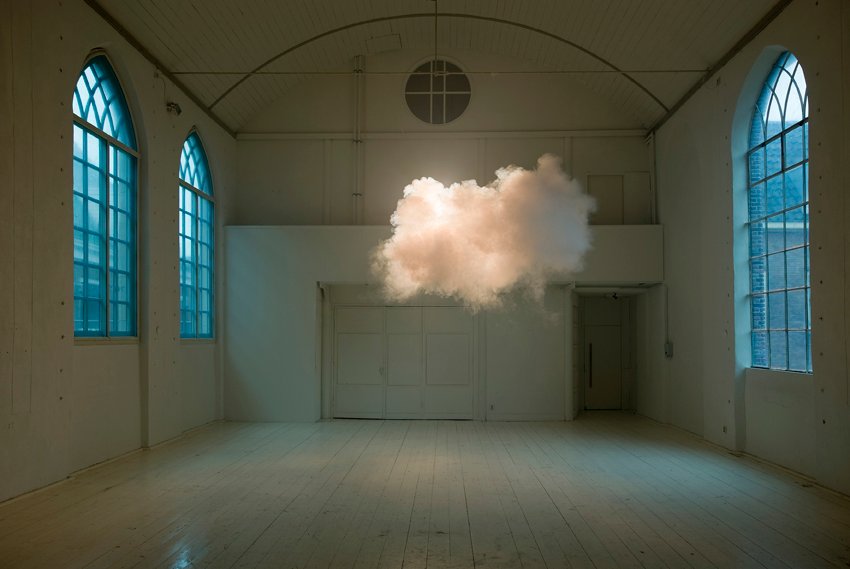Israel – Roy Nachum is a contemporary Israeli artist, based in New York. He works in a variety of mediums namely painting, installation, sculpture, interior designing, but mostly in oil. Capturing the silent dialogue between image and text, the artist sculpts Braille poetry and messages onto his canvases. The Braille poetry interrelated to his painting offers a way to people without the gift of sight to experience his work, and effectively take back impressions parallel to those one takes away from a painting through sight. Through his work he challenges concepts of vision, touch, social stigma, emotion, character and materialism by creating optical illusions and “double visions”. The dream-like distortions that therefore appear in his art, in turn lends to it complex psychological dimensions and a powerful emotional charge. He talks to Emaho about his art that demonstrates a deep affection for life, in its challenges as well as grandeur.
Emaho : Your paintings have a narrative, a poem about it and Braille. What takes longer – conceptualizing your art or actually painting it on canvas?
The Braille on the canvas expresses messages, poems and ideas. It is a form of expression, a way for me to get my thoughts and feelings about the work on to canvas, a way for me to relay these messages and ideas to viewers. Conceptualizing a work of art and actually painting are part of the same process. My art is interactive. The Braille is experienced by touch, therefore continuous physical contact keeps the work alive and in a perpetual state of process. The work is never really finished. With each physical interaction the work evolves and retains part of that experience.
 The King © Roy Nachum
The King © Roy Nachum
Emaho : You write verses for some of your paintings, capturing their essence for the blind to experience art. It must be challenging to create both as a part of the same concept and being equally expressive at that.
Both painting and writing are forms of expression I like to use when creating art. I cannot compare one facet of a work of art to another. My art is based on the idea of perception. Perception is how we identify and interpret sensory information in order to understand our environment and what we see. Perception is subjective and variable; depending on how we see, what we think we see and what we do not see, our perception changes.
My work can be experienced through various channels, including touch and sight. One of the first things someone who can see will notice when viewing my work is Braille. A person who is visually impaired cannot see my painting and cannot communicate the message using sight, but can experience the work by using the perception of touch. The Braille in itself is a message to the sighted viewer who can see the art, who can experience life through sight. A reminder that there are people who cannot even see the sun upon awakening. Open your eyes, forget the bullshit and appreciate that you can see.
If one does not have the ability to see, how can they experience visual art? Does it even exist? Shouldn’t it be for everyone? Art can be understood and appreciated despite differences in language and culture. Why not break down the barriers of perception as well?
I want to break the barrier between viewer and sacred object. I create my work from beginning to end with my hands; why should it stop there? As the viewer touches the work they leave a trace of themselves and become part of it.
 Self-Portrait © Roy Nachum
Self-Portrait © Roy Nachum
Emaho : Is it true that you spent a week blindfolded for your collection ‘Blind’ which combines painting with Braille? How was your experience and how was it helpful from the artworks’ point of view?
Yes. It was a very difficult and intense experience, not only for obvious reasons. Once I had become more comfortable with the blindfold and not being able to see, it came time to take it off. This was the most difficult part of the experience. I felt it was unfair that I was able to take the blindfold off and return to my normal life with sight, to get to see the world again, while people who are actually blind do not have this option.
Emaho : In your series ‘Pixelated’, each ‘pixel’ has been sculpted one by one onto the canvas. What was the process like and what was the motive behind it?
“Pixilated” is a series of paintings that take an “analog” approach to recreate “pixels” associated with digital pictures. The works signify the static glamorization of advertisements. The subjects are often caught between worlds: submergence/emergence, naiveté/maturity, wilderness/civilization.
Emaho : The ‘Fire’ series is again an experimental breakthrough in the world of art. The visually impaired unknowingly leave fingerprints on the canvas in their attempt to decipher the Braille. It is almost like giving them the agency to leave their own artistic impressions, isn’t it? What was the thought behind this unique concept?
Fire is a series of interactive paintings. They are, to all intents, collaborative works.Each solid canvas textured with Braille has a frame that I burn until the wood forms a charcoal like surface.As my unsighted collaborators run their fingers from burned frame to painted Braille they leave fingerprints as evidence of the actual physical contact. These works are ultimately unfinished and continue to evolve with further physical contact.

Emaho : What is the significance of the crown and balloon motifs you use in your paintings, sculptures and installations?
The crown is a metaphor for blindness caused by displaced values and desire.The balloon is the dream; everyone has a dream.
Emaho : Some of your paintings have splashes of red or yellow. Does the color field represent something? Even the installation ‘Sea of Crowns’ reflects the color red. Why this choice of colors?
It is what I thought to do at the time; it is what came to me for that particular work. Sometimes color splashes are an expressive layer and a way for me to express the movement and emotion of the piece.
Emaho : You use animals as subjects on your canvas. At times you do so along with a human being. Are you hinting at wilderness vis-a-vis civilized humans? What is the idea behind the intimacy portrayed between them?
Sometimes the animal and the subject share commonality and reflect one another. Other times ideas appear in my mind and I paint them the way I see them.
So do you think your work can be categorized as under surrealism or hyperrealism?
Neither. Those are two movements from the past and I am creating something new.
 Sea of Crowns © Roy Nachum
Sea of Crowns © Roy Nachum
Emaho : Coming to your self portrait, are the hands implying the sense of touch that the blind rely on? The way they remember or understand faces is by touching them. Is it your hand movements in the painting trying to ‘touch’ your viewers or vice versa?
We encounter so many people, so many faces, to the point that the face loses importance in defining the character. Closeness to others is developed through more intimate interactions with other people and should have little to do with one’s appearance.
Emaho : The dimensions to your walk-in installation ‘Heat’ is like a play on the ability to see. The Braille text is created from light bulbs which are too hot to touch for the blind and blinding to a viewer. And inside it is pitch dark so the written text is invisible. What is the concept behind this complex overlapping composition?
“Heat” is an interactive installation that reverses the tactile and visual natures of Braille and type.
Emaho : How was the experience of working with Lighthouse International during your show ‘Open Your Eyes’ – an NGO to empower visually impaired in myriad ways to lead independent lives?
The Lighthouse is fantastic non-profit organization dedicated to fighting vision loss. I am happy to have worked with them and continue to support their important cause.
 Someday © Roy Nachum
Someday © Roy Nachum
Emaho : Your “double vision” paintings ‘Tears of Laughter’ and ‘Rise’ trace movement impeccably. What is the idea behind such an effort?
My double vision technique breaks apart the image indicating movement and the subjectivity of perception.
Emaho : You seem to be having a celebrity fan following including the likes of Miranda Kerr, Justin Timberlake, Sir Philip Greene and Leonardo Di Caprio. Does that affect you or your work – positively or negatively?
I don’t know if it has any effect either way, that isn’t my concern. I am happy to be making work that people connect with.
Emaho : General protocol in museums and galleries dictates that one is not supposed to touch art. Your art allows people to do so. Is this attempt of breaking out of traditional limitations one of your art’s various motives?
I encourage people to touch and interact with my work. Human interaction keeps the work alive. I start a painting and, by allowing people to touch my work, they continue it. The work is never finished.







 Metamorphosis © Roy Nachum
Metamorphosis © Roy Nachum







